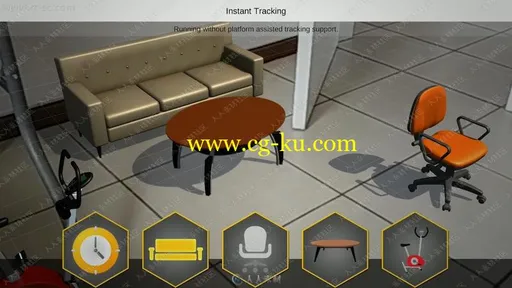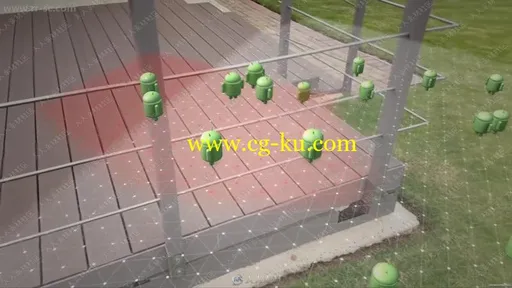本教程是关于Unity中ARCore游戏增强现实核心技术训练视频教程,时长:2小时,大小:8 GB,MP4高清视频格式,教程使用软件:Unity 3D,附源文件,作者:Ritesh Kanjee,共5个章节,语言:英语。
Unity是一款跨平台的游戏开发工具,从一开始就被设计成易于使用的产品。
作为一个完全集成的专业级应用,Unity还包含了价值数百万美元的功能强大的游戏引擎。
Unity 4作为一个游戏开发工具,它的设计主旨就是让你能够创建令人惊讶的游戏。
如果你之前尝试过Unity,请查看Unity 3都做了哪些更新。
如果你是第一次尝试,那就好好看看吧,看Unity都能为你带来什么。
Unity作为一种开发环境,可让你脱离传统的游戏开发方式,以一种更简单的方式专注于你的游戏开发。
开发网络游戏、移动游戏、单机游戏,Unity都能完全胜任。
Do you want to learn the new ARCore 1.3 in Unity SDK? This course will teach you all the fundamentals of ARCore augmented reality so that you can get started developing your own augmented reality apps. In the app section, we show you how you can apply the basics to more advanced apps for either gaming or for productivity-based apps.This course is designed to help you understand the fundamentals of augmented reality using the ARCore in Unity through practical and easy to understand labs. This class covers these capabilities, including getting started, simple and multiple target detection, smart terrain as well as leap motion integration.Style and ApproachI’m sure by now you are really excited to get started with ARCore, however, It is important to note that before you enroll in this course there are some training materials (Unity assets) and hardware you need to purchase beforehand to make this course the best learning experience. See the video for details.Table of ContentsINTRODUCTIONARCORE FUNDAMENTALSARCORE APPSARCORE 1.2 SDKCONCLUSION & BONUS SECTIONWhat You Will LearnWe designed this course for anyone who wants to learn the state of the art in using Google’s ARCore SDK without the steep learning curve.By the end of the course, you will be able to understand the fundamentals of ARCore SDK Core functionality from motion tracking, to point and plane detection and even test light estimation.Thereafter you will soon be developing your own amazing augmented real-world applications.In this course, we will begin with the fundamentals section by creating a simple hello AR app that will help you to quickly get something working.Next, we will look at the first core functionality which is motion tracking and you will learn how spatial tracking works in AR.The second core functionality of ARCore is point and plane detection. To detect feature points and how coplanar feature points form into planes.Then we’ll build a simple hit testing app where you can spawn random colored cubes or spheres with a simple touch using ray casting.We’ll end the basics section with simple light estimation, to make a monster appear or disappear at the flick of a physical light switch.After that, we’ll move on to the exciting part of the course where we create some really amazing ARCore 1.3 apps.In the first lecture, you can build your own accurate measuring app using ARCore; there’s a lot of practical uses for this app.Thereafter we learn how to transverse within an AR scene by building a dragon that can move and fly in any direction as well as breathe fire. Next, we take flying to another level by building a drone in augmented reality.- For education, we demonstrate how you can build your own solar system and how to use touch ray casting to bring up information about the planets, moons, and stars.AuthorsRitesh KanjeeAugmented Startups have over 8 years experience in Printed Circuit Board (PCB) design as well in image processing and embedded control. Author Ritesh Kanjee has completed his Masters Degree in Electronic engineering and published two papers on the IEEE Database with one called “Vision-based adaptive Cruise Control using Pattern Matching” and the other called “A Three-Step Vehicle Detection Framework for Range Estimation Using a Single Camera” (on Google Scholar). His work was implemented in LabVIEW. He works as an embedded electronic engineer in defence research and has experience in FPGA design with programming in both VHDL and Verilog. He also has expertise in augmented reality and machine learning in which he shall be introducing new technologies through the medium of video




发布日期: 2018-7-25